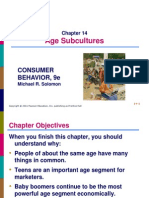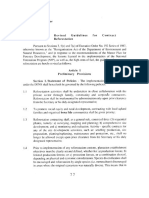0% found this document useful (0 votes)
53 views23 pagesPart A
[1] Pre-teenagers between the ages of 8-12 are an important target market as they influence $500 billion in family purchases annually and represent future customers.
[2] They buy games, clothes, candy, bicycles, fast food, watches and enjoy cartoons. Their preferences are influenced by friends, packaging, and advertising.
[3] They don't typically do their own searches, but gain awareness from advertising, friends, and their environment. Evaluation is based on parental guidance, attractiveness, and what is deemed "cool" by friends.
Uploaded by
Anchal PundirCopyright
© Attribution Non-Commercial (BY-NC)
We take content rights seriously. If you suspect this is your content, claim it here.
Available Formats
Download as PPT, PDF, TXT or read online on Scribd
0% found this document useful (0 votes)
53 views23 pagesPart A
[1] Pre-teenagers between the ages of 8-12 are an important target market as they influence $500 billion in family purchases annually and represent future customers.
[2] They buy games, clothes, candy, bicycles, fast food, watches and enjoy cartoons. Their preferences are influenced by friends, packaging, and advertising.
[3] They don't typically do their own searches, but gain awareness from advertising, friends, and their environment. Evaluation is based on parental guidance, attractiveness, and what is deemed "cool" by friends.
Uploaded by
Anchal PundirCopyright
© Attribution Non-Commercial (BY-NC)
We take content rights seriously. If you suspect this is your content, claim it here.
Available Formats
Download as PPT, PDF, TXT or read online on Scribd
/ 23




















































































